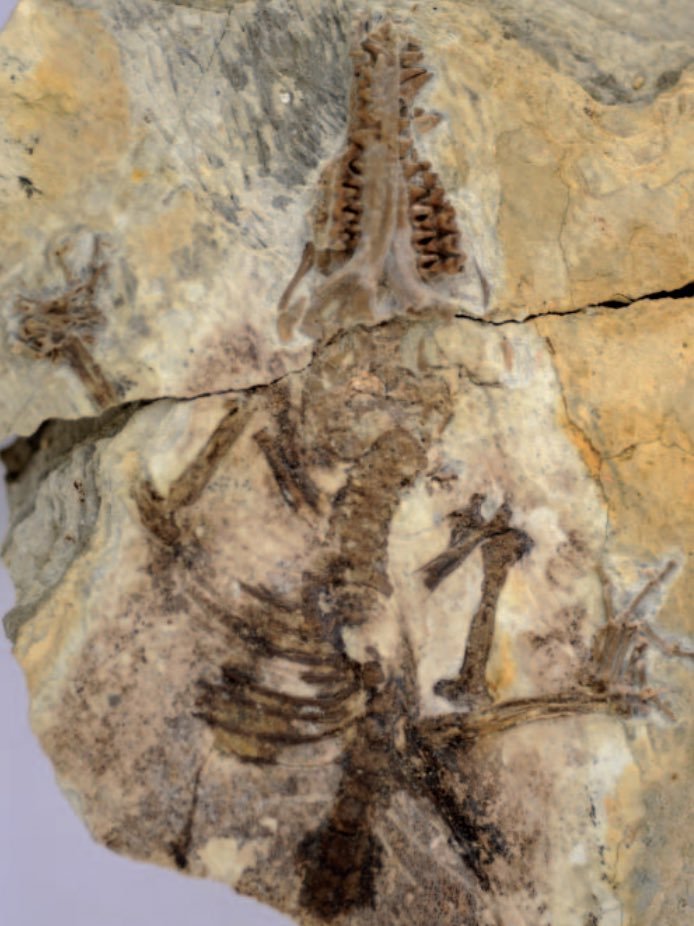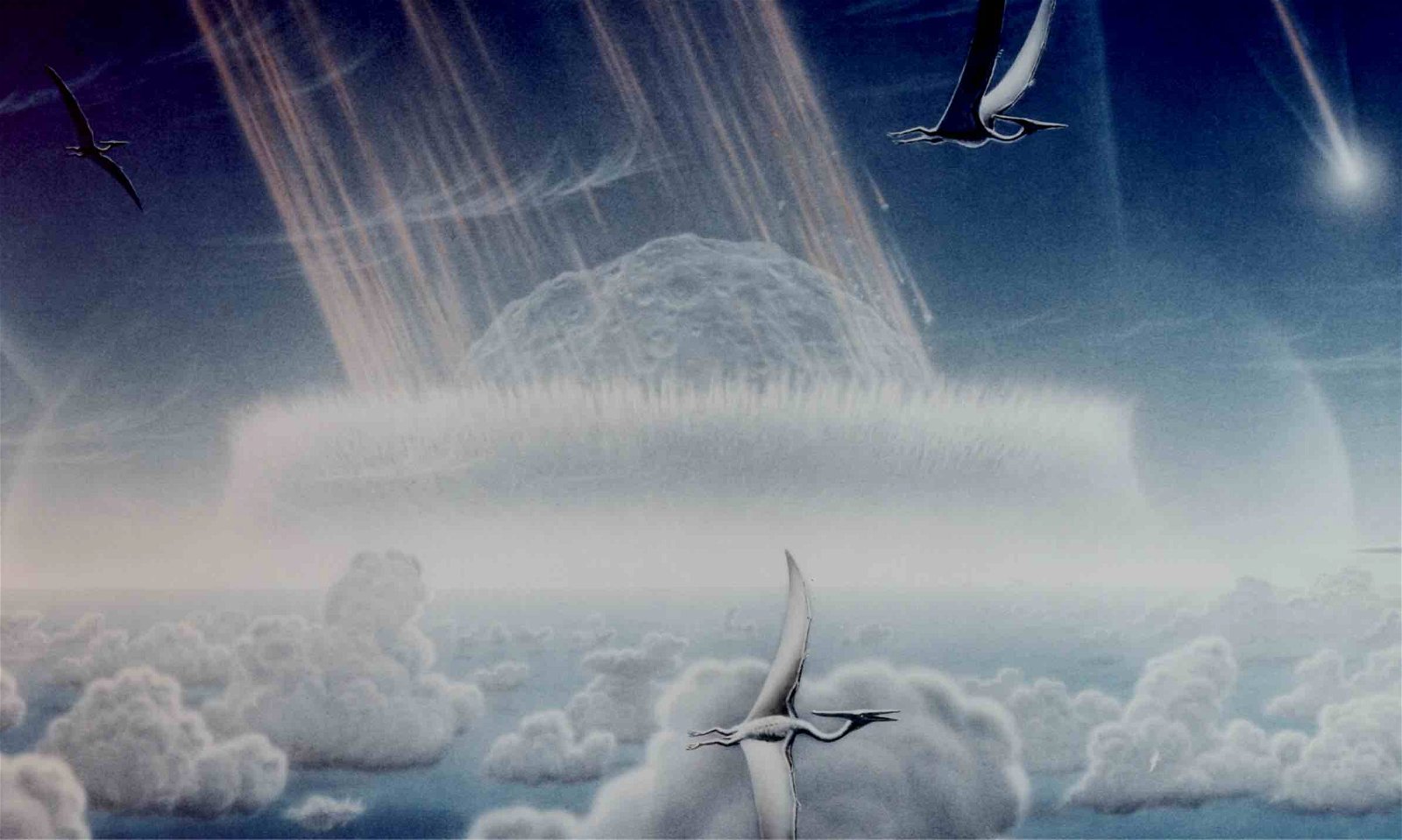66 million years ago, a massive asteroid collided with Earth, triggering a sudden mass extinction event that decimated close to three-quarters of all animal and plant species on the planet.
Known as the Cretaceous–Paleogene (K–Pg) extinction event, this cataclysmic period in Earth’s history was long believed to have occurred well in advance of the appearance of mammals that would eventually evolve into the forms that populate our modern world.
However, a team of scientists now reports that prior to the extinction of these massive ancient reptiles, the earliest placental mammals—a group representing the largest of three modern subdivisions of mammals that include humans—co-existed with dinosaurs for a brief moment in geological history.
Following the impact event, most of the world’s large tetrapods were killed off with few exceptions, which included ocean-dwelling turtles, crocodiles, and a few other reptile species. Avian species also managed to survive, although scientists had previously been unclear on whether placental mammals had lived alongside dinosaurs before their demise or if the evolutionary beginnings of these creatures occurred thereafter.
Since fossils of placental mammals do not appear in rocks older than 66 million years, it would seemingly suggest their origins must have occurred sometime after the widespread mass extinctions at the end of the Cretaceous Period.


However, the researchers involved with a recent study published in Current Biology challenge this notion, pointing to a new analysis of molecular data suggestive of an earlier origination for these mammals.
In years past, molecular data supporting a Cretaceous origination of placental mammals has often been considered controversial since the earliest appearances of unambiguous evidence representing these creatures does not appear until much later in the fossil record.
In their new paper, the authors acknowledge this absence of earlier fossils, noting that it superficially appears to complement notions of the post-Cretaceous arrival of placental mammals.
“Nevertheless,” the authors say, “lineage divergence must occur before it can be manifest phenotypically in descendent lineages,” adding that the fossil record, rather than being simply read as though it were a direct, unambiguous historical record, requires correct interpretation.
To achieve this, the authors of the recent study, led by Emily Carlisle of Bristol’s School of Earth Sciences, scoured thousands of examples of placental mammalian fossils for patterns related to both the extinctions and origins of various groups.
“There’s been a lot of debate over the origins of placental mammals because there are no fossils of definitive placental mammals from the Cretaceous,” Carlisle told The Debrief in an email.
“We downloaded fossil data from the Paleobiology Database (PBDB) for all placental mammals, allowing us to use about 15,000 records of fossil occurrences through time,” Carlisle told The Debrief. “With this, we could track when families appeared and when they disappeared from the fossil record.
Applying a Bayesian Brownian bridge model to this data set, the researchers were able to generate estimations of the origins and extinctions by interpreting the fossils based on probability.
“The model estimates the origination of placentals in the Late Cretaceous,” Carlisle and her coauthors write, “with ordinal crown groups originating at or after the K-Pg boundary.”
“The results reduce the plausible interval for placental mammal origination to the younger range of molecular clock estimates,” the team says, which supports the view that the earliest ancestors of several mammal lineages in existence today “overlapped with and followed the K-Pg mass extinction.”
“From this, we could estimate the ages of placental mammal families, seeing when they first evolved, and this showed an origin in the Cretaceous,” Carlisle told The Debrief.
These modern mammal groups include humans, our other primate cousins, as well as rabbits, dogs, cats, bats, and several others. Of course, prior to the K-Pg mass extinction, our earliest common ancestors would have had little resemblance to the mammals of modern times. However, the team’s findings do reveal that some of our earliest common ancestors, different though they were, once thrived alongside the dinosaurs.
“Our results show that there were a few placental mammal families present in the Cretaceous, but many more originated and diversified after the K-Pg mass extinction,” Carlisle told The Debrief. Although factors like survival capabilities were not included in the scope of the team’s study, Carlisle says the patterns they found suggest these mammals “diversified after the mass extinction, perhaps taking advantage of the gaps in ecosystems left by the loss of dinosaurs.”
Apart from extending the probable origins of placental mammals to the Cretaceous Period, the team’s findings also help researchers understand the dynamics of mass extinctions that result from events like the K-Pg event.
“By examining both origins and extinctions, we can more clearly see the impact of events such as the K-Pg mass extinction or the Paleocene-Eocene Thermal Maximum (PETM),” said Bristol Professor Phil Donoghue, one of the paper’s co-authors, in a statement.
Carlisle, Donoghue, and the team report their findings in their recent paper, “A timescale for placental mammal diversification based on Bayesian modeling of the fossil record,” published in Current Biology on June 27, 2023.
This article was updated to feature additional commentary from the authors of the paper cited above.
Micah Hanks is the Editor-in-Chief and Co-Founder of The Debrief. He can be reached by email at micah@thedebrief.org. Follow his work at micahhanks.com and on Twitter: @MicahHanks.

